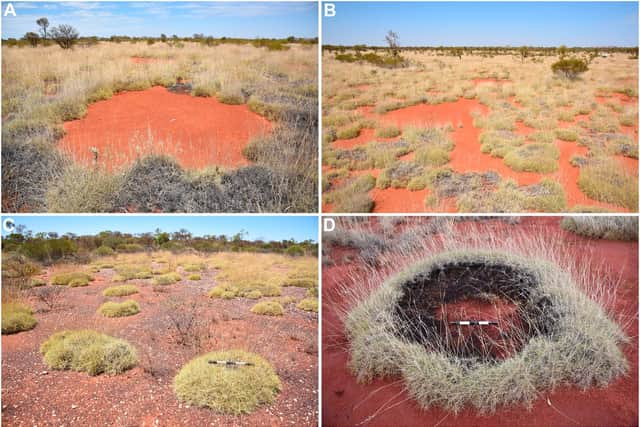Fairy circles: mysterious patches more common than previously thought, researchers say
and live on Freeview channel 276
Fairy circles have been spotted around Namibia and Australia have now been mapped across 250 locations in 15 countries.
Until recently, the circular patterns of bare soil surrounded by plants generating rings of vegetation had only been described in Namibia and Australia, but a recent study has revealed that these patches are also common in areas such as the Sahel, Western Sahara, the Horn of Africa, Madagascar, southwest Asia and central Australia.
Advertisement
Hide AdAdvertisement
Hide AdA new study published 26 September in the journal PNAS, used artificial intelligence to classify satellite images. They looked at 263 sites where patterns similar to the fairy circles have been described and found fairy circles are more common than previously thought.


Multiple theories have been suggested over the past five decades to explain their formation, but the global dimension of the phenomena has remained elusive, said researchers, including those from Universidad de Alicante (UA) in Spain.
Previous theories have suggested various types of termites may be responsible, or that the patches are the consequence of vegetation patterns arising from competition between grasses.
However, researchers found that a combination of certain soil and climate characteristics, such as low nitrogen content and an average rainfall of less than 200 mm/year, are associated with the patches.
Advertisement
Hide AdAdvertisement
Hide Ad“Analyzing their effects on the functioning of ecosystems and discovering the environmental factors that determine their distribution is essential to better understand the causes of the formation of these vegetation patterns and their ecological importance,” study co-author Emilio Guirado from UA said.
The findings may help researchers find out if these patterns in the soil can be indicators of ecosystem degradation with the climate crisis.
“This study has taken into account multiple variables hitherto not considered, such as albedo or the state of the aquifers,” said Jaime Martínez-Valderrama, another author of the study.
“This is a particularly relevant factor, since the massive use of groundwater in arid areas around the world, including deserts, could disturb these formations,” Dr Martínez-Valderrama said.
Comment Guidelines
National World encourages reader discussion on our stories. User feedback, insights and back-and-forth exchanges add a rich layer of context to reporting. Please review our Community Guidelines before commenting.
